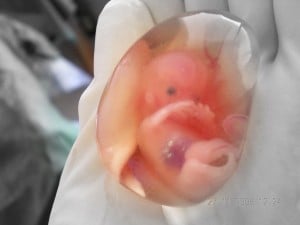 College guys take a hike in spike heels.
College guys take a hike in spike heels.
This is the first time I’ve heard about this. Not because the idea is so new—but rather, because I’m so out of touch. Apparently it’s not new at all, as an increasing number of men’s groups across America and throughout the world have participated in the International Men’s March to Stop Rape, Sexual Assault and Gender Violence.
 I saw pictures of men in Africa, tottering in women’s heels. I saw the men of Lubbock, Texas, doing the same—ambling across campus in 5” red spikes.
I saw pictures of men in Africa, tottering in women’s heels. I saw the men of Lubbock, Texas, doing the same—ambling across campus in 5” red spikes.
Well, stopping rape is good. Not just good, but very good. According to United States Department of Justice document Criminal Victimization, there were overall 191,670 victims of rape or sexual assault reported in the United States in 2005. The Colorado Coalition Against Sexual Assault reports that 1 in 6 women has experienced an attempted or completed rape.
 Rape is violence, most certainly, against the one woman who is victimized by the assault. It is violence against the rest of society, as well. It is a denial of the intrinsic dignity of every woman, as a person created in the image and likeness of God. It is a denial of the sacredness of the sexual act, which is the wedding gift of a great and loving God.
Rape is violence, most certainly, against the one woman who is victimized by the assault. It is violence against the rest of society, as well. It is a denial of the intrinsic dignity of every woman, as a person created in the image and likeness of God. It is a denial of the sacredness of the sexual act, which is the wedding gift of a great and loving God.
I worry, though, that this whole campaign has become somehow enmeshed in other “gender-based” causes (such as abortion, or free contraception, or lesbian rights). I’m pretty sure that if we ask the staff running this national program where they stand on these other issues, they’ll lump them all together. You’ll be met with cries of “sexism” if you suggest that the ultimate violence against women is not rape, but execution in the womb.
Father William Saunders, dean of the Notre Dame Graduate School of Christendom College and pastor of Our Lady of Hope Parish in Sterling, Virginia, published a column in the Arlington Catholic Herald titled “Ethical Treatment After Rape.” He tackles the hard questions, but does so with compassion for the victims of this violent personal invasion. Father Saunders writes:
In accord with the Ethical and Religious Directives for Catholic Health Care Services (no. 36), the care for the rape victim has four aspects: First, she must receive spiritual and psychological support and counseling to help her deal with the trauma of the attack. Such support and counseling will probably continue for some time after the immediate period.
Second, health care providers need to cooperate with law enforcement officials, gathering evidence that can be used in the prosecution of the rapist.
Third, the victim needs treatment for bruises, cuts, or other injuries.
Finally, health care providers must provide treatment to prevent the possible contraction of venereal disease and pregnancy. The Directives state, “A woman who has been raped may defend herself against a conception resulting from sexual assault. If, after appropriate testing, there is no evidence that conception has occurred already, she may be treated with medication that would prevent ovulation, sperm capacitation, or fertilization. It is not permissible, however, to initiate or to recommend treatments that have as their purpose or direct effect the removal, destruction, or interference with the implantation of a fertilized ovum.”(no. 36)
The woman who is a victim of rape has the moral right to prevent the pregnancy for the following reasons: First, the rapist (including his sperm) is an unjust aggressor who has violated the woman’s dignity. Second, rape is an act of force and violence, unlike the conjugal love in marriage whereby both spouses give freely of themselves in an act of unitive and procreative love. Third, the woman is not responsible for the action, and thereby has the right to prevent the pregnancy. (Please note that for these three reasons, this guidance does not violate the Church’s teaching regarding contraception as expressed in Humanae Vitae, which, because of the free-giving between spouses, stated, “Each and every marriage act must remain open to the transmission of life” (no. 11).)
Father Saunders goes on to discuss the various rape protocols, and to address the difficult question of what to do if a pregnancy has already occurred. Don’t miss it—You can read the rest here.
 Another don’t-miss article: I reported a while back about my friend Rebecca Kiessling. Rebecca is a family life attorney who handles many cases involving both private and public adoptions. She is also a wife, mother, and speaker on the national circuit. Rebecca, you see, was conceived in rape. Her birth mother wanted to choose abortion; but since Roe v. Wade was not yet the law of the land in America, she was unable to arrange an abortion and decided instead to give up for adoption the child conceived in the rape. Rebecca’s story is one you won’t forget.
Another don’t-miss article: I reported a while back about my friend Rebecca Kiessling. Rebecca is a family life attorney who handles many cases involving both private and public adoptions. She is also a wife, mother, and speaker on the national circuit. Rebecca, you see, was conceived in rape. Her birth mother wanted to choose abortion; but since Roe v. Wade was not yet the law of the land in America, she was unable to arrange an abortion and decided instead to give up for adoption the child conceived in the rape. Rebecca’s story is one you won’t forget.











